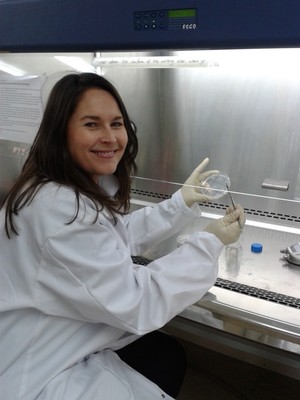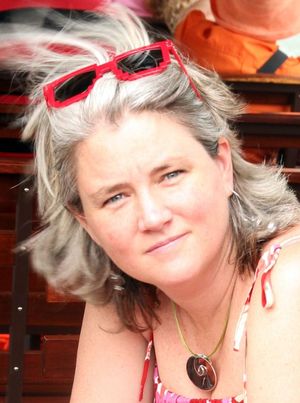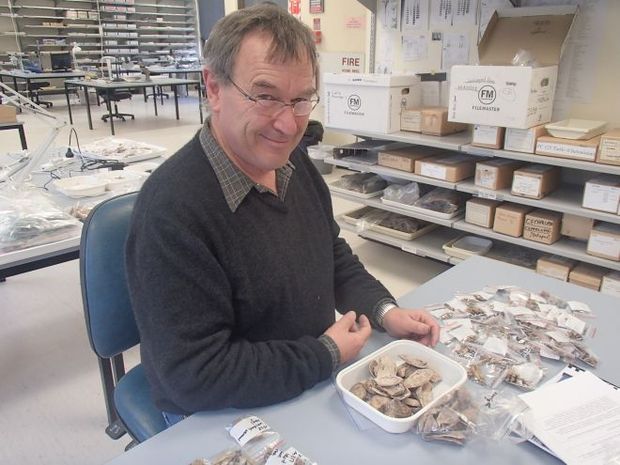Our Changing World for Thursday 29 August 2013
Iron in Ryegrass Endophytes
 Perennial ryegrass is New Zealand's main pasture grass, but it can only persist and thrive in symbiosis with an endophytic fungus that protects it from insect pests, in exchange for nutrients. When ryegrass was first introduced in New Zealand, the wildtype endophyte produced a neuro-toxin that causes ryegrass staggers. To avoid the condition, AgResearch developed two endophyte strains, AR1 and AR37, which are not harmful to stock but still produce toxins against some insects.
Perennial ryegrass is New Zealand's main pasture grass, but it can only persist and thrive in symbiosis with an endophytic fungus that protects it from insect pests, in exchange for nutrients. When ryegrass was first introduced in New Zealand, the wildtype endophyte produced a neuro-toxin that causes ryegrass staggers. To avoid the condition, AgResearch developed two endophyte strains, AR1 and AR37, which are not harmful to stock but still produce toxins against some insects.
As part of this long-standing research project to investigate bioactive compounds produced by ryegrass endophytes, Linda Johnson (left), the AgResearch science team leader for plant-fungal interactions, discovered a small molecule that plays a crucial role in maintaining the finely tuned relationship between the fungus and its host plant. In a paper recently published in PLOS Pathogens, she describes the function of siderophores, which bind strongly to iron, an element that is essential to both the host and fungal partner. This iron-grabbing mechanism is widespread among fungi (including common human fungal infections such as thrush and athlete's foot) but this is the first report that siderophores are essential to the mutually beneficial relationship between ryegrass and endophytes.
In this interview, Linda explains that when the siderophore gene is experimentally deleted from the fungal genome, the usually tightly controlled, synchronous growth of the fungus inside the ryegrass is disrupted, leading to stunted and deformed growth.
Textile Science and Socks
If you’re more interested in buying clothes for their performance rather than just the way they look, then you’ll appreciate the kind of research that’s carried out by the Department of Clothing and Textile Sciences at the University of Otago.
To find out more about their work Alison Ballance meets Head of Department Raechel Laing and PhD student Rebecca van Amber, who is investigating friction and compression in socks constructed from different fibres, yarns and fabrics.
Using Light for Medical Imaging
 University of Auckland’s Frederique Vanholsbeeck (right) is using light to observe and understand physiological processes, creating techniques for imaging human tissues non-invasively.
University of Auckland’s Frederique Vanholsbeeck (right) is using light to observe and understand physiological processes, creating techniques for imaging human tissues non-invasively.
One such technique is optical coherence tomography (OCT) which can image the skin to a depth of 1mm. Like ultrasound, OCT uses waves and their echoes to build up a 3D image of biological tissues, but unlike ultrasound uses light instead of sound.
OCT allows doctors to, for example, examine patients with burns to see how deep and serious the burn is, and to look at plaque in arteries using a scope that goes inside the body. Optometrists are already using the technique to scan retinas and corneas.
The setup in the lab has much better resolution than what is available commercially, and Frederique Vanholsbeeck is looking at tweaking the light sources (which are essentially lasers) to improve the characterization of tissue.
Taking Stock Project and Early Maori Diet

Ian Smith in the archaeology lab with tuatua shells that have been counted to quantify the amount of shellfish eaten by early Maori (image: A. Ballance)
New Zealand was the last major landmass to be settled by humans, around 1230 to 1280 AD, and the multi-disciplinary Taking Stock project has been looking at the structure and functioning of New Zealand’s coastal shelf ecosystems over the short period since we’ve been here. It is part of the international History of Marine Animal Populations project.
Archaeologist Ian Smith from the Department of Anthropology and Archaeology at University of Otago has been investigating what marine food was on the menu for early Maori in the wider Hauraki Gulf area and on the Otago-Catlins coast. These areas were chosen as case studies as they were both settled by Māori at about the same time, but have since experienced contrasting trajectories in human population size and marine resource use. Ian has been data-mining existing evidence from about 100 midden sites, and Alison Ballance joins him in the lab to see some of the bones and shells from various species of fish, shellfish, seals and sealions, and seabirds.
You can read more about the research in this paper: Pre-European Maori exploitation of marine resources in two New Zealand case study areas: species range and temporal change, by Ian Smith in the Journal of the Royal Society New Zealand 43 (1): 1-37.